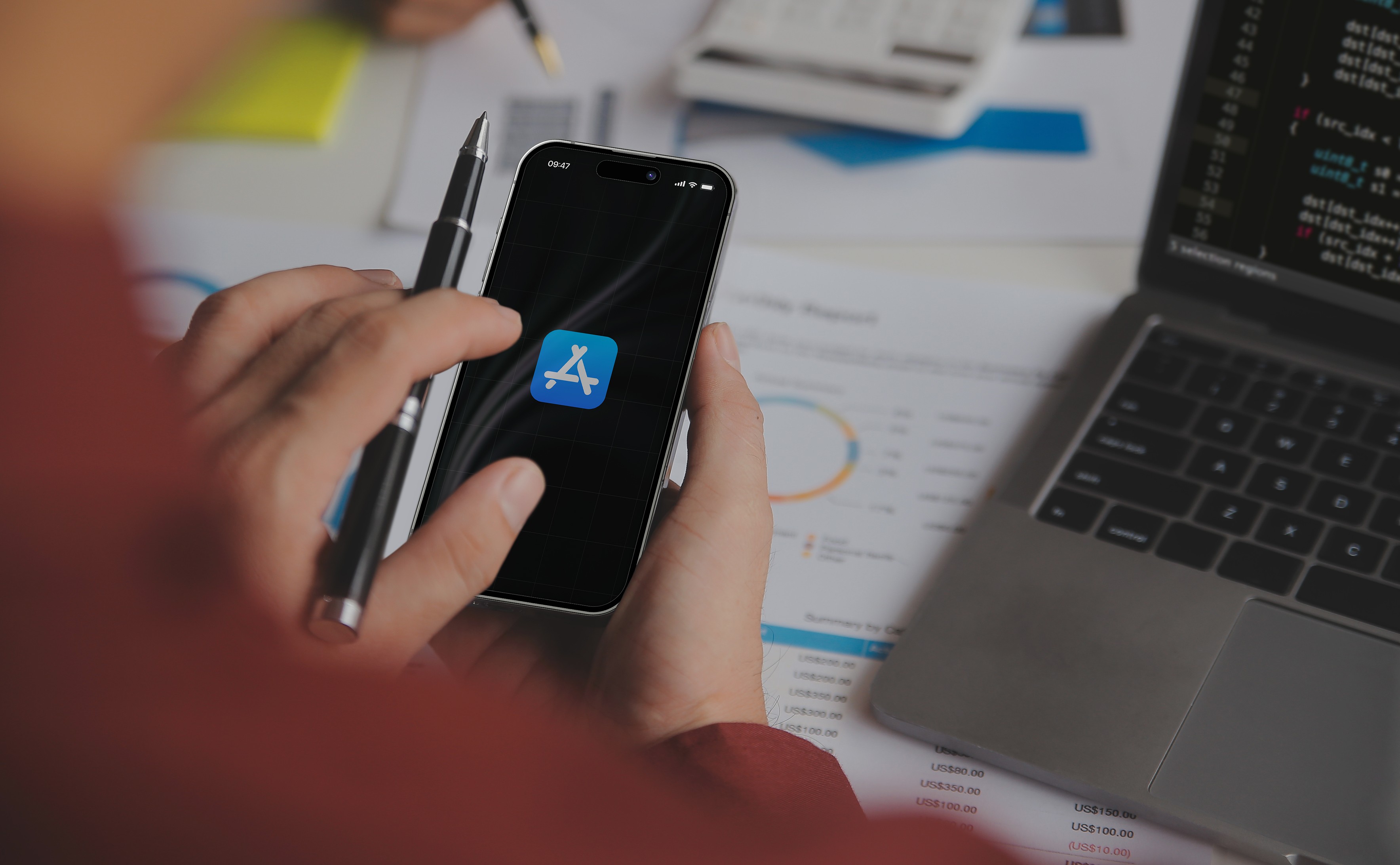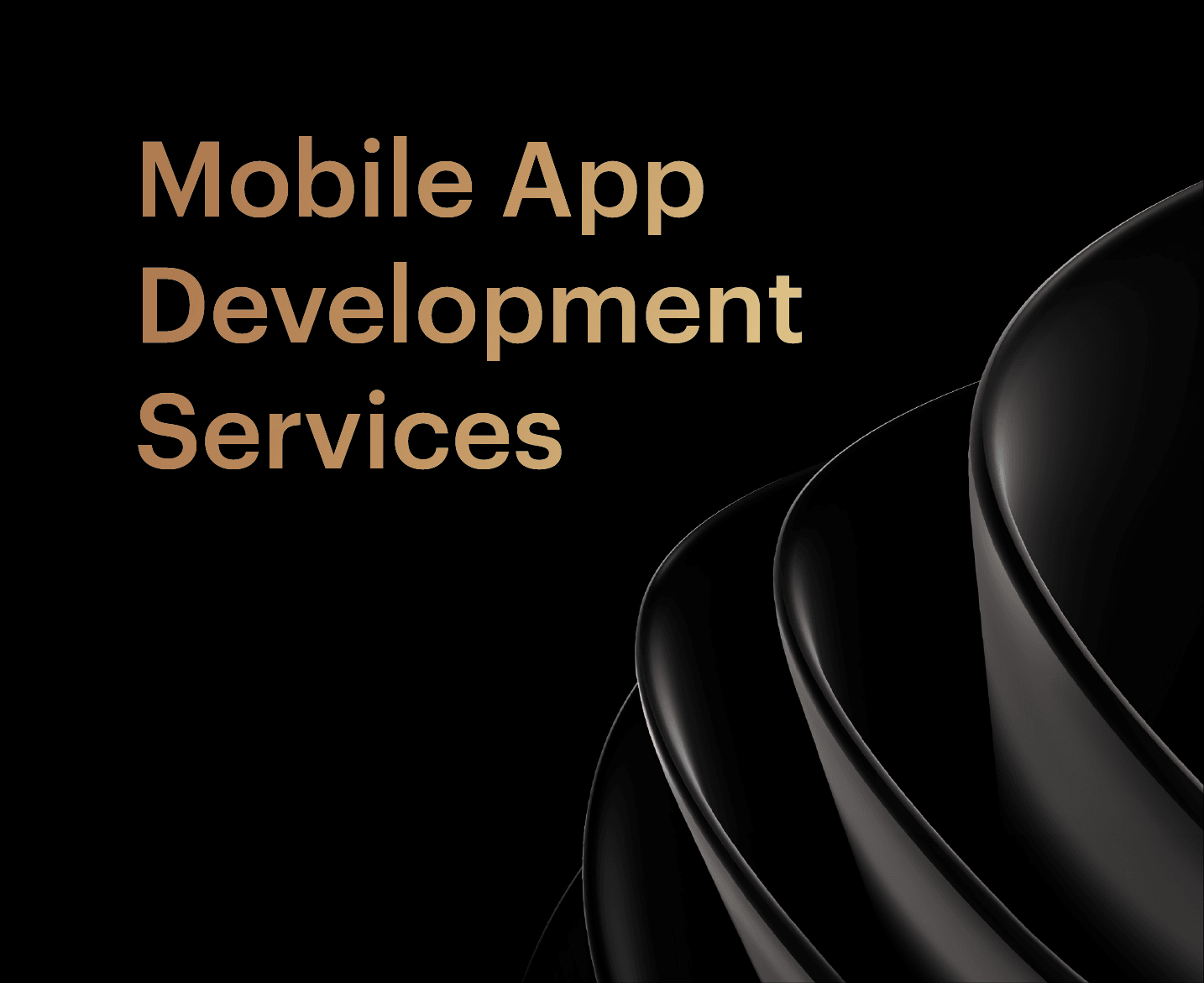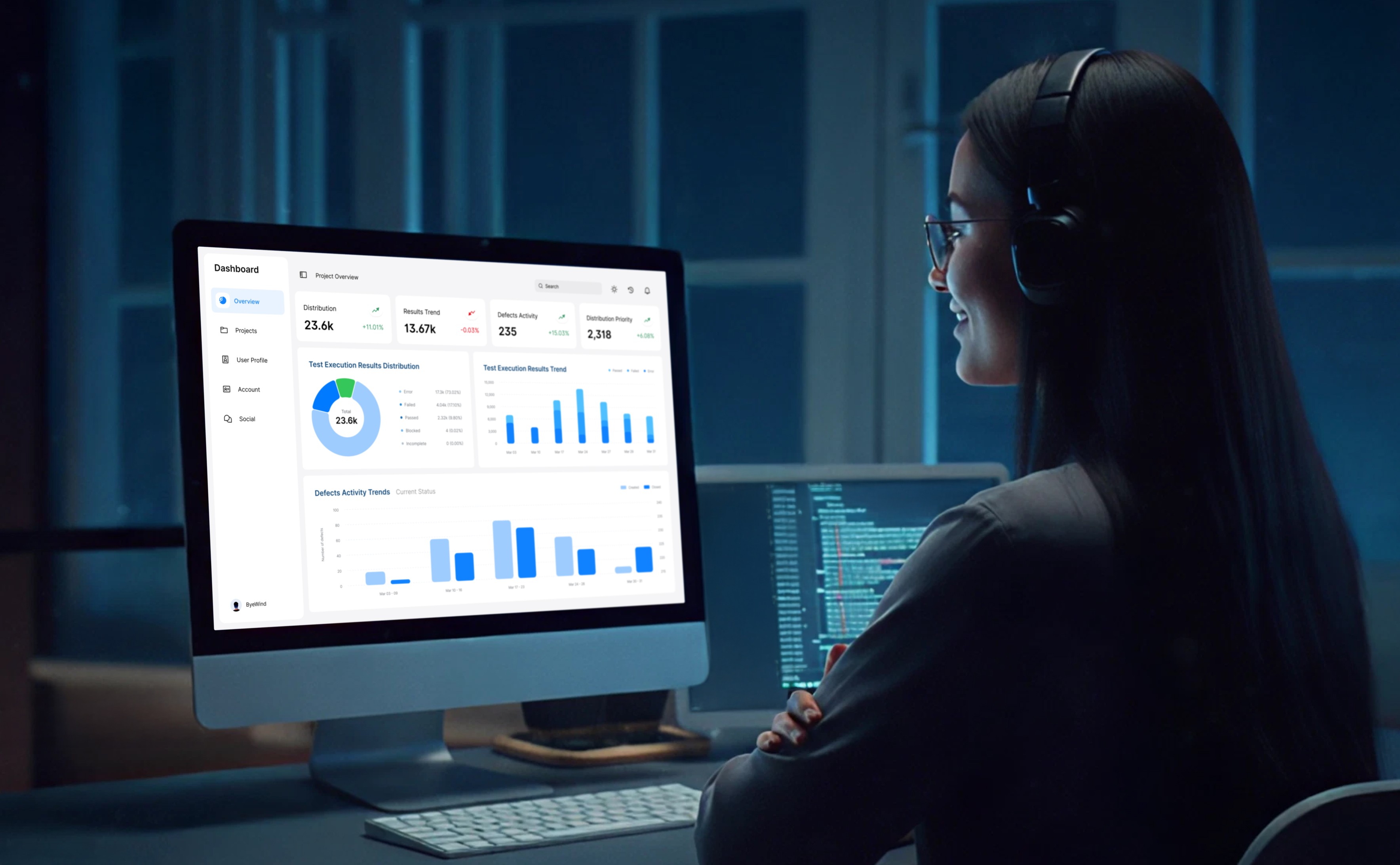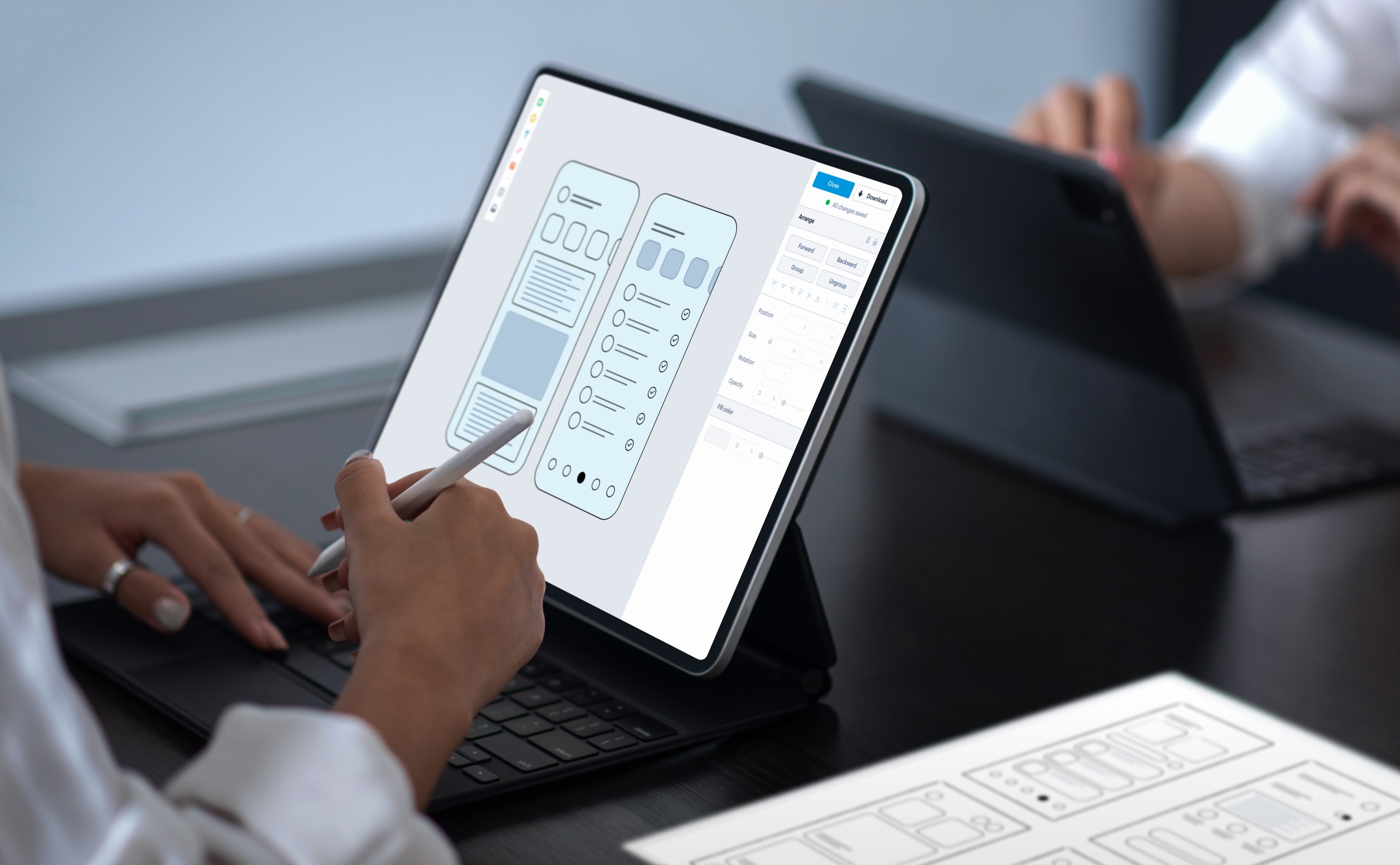Mobile App Development Cost and Considerations— A Detailed Guide

- How Much Does it Cost to Make an App?
- Key Factors Affecting Mobile App Development Costs
- Mobile App Development Costs Estimation Based on the Development Stages
- Additional Mobile App Budget Considerations
- Additional Team Members for Mobile App Development
- Five Hidden Costs of App Development
- Best Ways to Reduce the Cost of Mobile App Development
- Wrapping Up
- How Much Does it Cost to Make an App?
- Key Factors Affecting Mobile App Development Costs
- Mobile App Development Costs Estimation Based on the Development Stages
- Additional Mobile App Budget Considerations
- Additional Team Members for Mobile App Development
- Five Hidden Costs of App Development
- Best Ways to Reduce the Cost of Mobile App Development
- Wrapping Up
Businesses search for sources that help port their services to the platforms, devices, or channels where potential customers invest most of their time. The mobile app industry is taking a huge leap, with more than 6.9 billion smartphone users around the world.
With app usage and smartphone penetration at a whopping rate, they bring businesses incomparable revenue, which is a solid reason for businesses of all sizes to not miss out on them.
The transition of the app store from 500 apps during its release in 2008 to 1.8+ million apps in 2024 is clear evidence of the proliferation of apps across the digital realm.
While there is an app for everything and businesses invest so much into mobile app development services, it is significant to have a detailed insight into the factors that determine the cost of building a mobile app.
If you’re on your mission towards developing a mobile app for your business and wish to explore the factors that impact the mobile app development cost, this blog is for you.
How Much Does it Cost to Make an App?
A lack of a functional mobile application for your business can miss out on customer loyalty and numerous revenue opportunities. How to make app costs optimised and how much would a mobile app development service provider charge? As an answer to this question, we have gathered the most essential information that lets you gain an in-depth understanding of the mobile app development cost calculation.
After analysing the client’s requirements, a mobile app development company discusses the feasibility and scope of the project with the client. Considering the technology used and various cost-determining factors for building the app, an estimated project timeline is determined. Based on these factors, a proposal is submitted to the client for approval.
App development is a multi-step process that requires vigilant planning with a specific timeline. As a professional mobile app development company, WAC helps clients with precise mobile app development cost estimation through careful analysis of features to accomplish, must-have aspects to build the app concept, along with a detailed representation of app complexity, pace, and type of the app to be developed.
After the client onboarding, we offer a pricing model, which defines the app development pricing structure and lets the client choose the preferred model for project invoicing.
| Time and Material Model | Dedicated Team | Fixed Price Model |
| Applies to projects that demand continuous evolution. | Extend internal team with remote resources. | It applies to projects that have a fixed scope. |
|
|
|
Key Factors Affecting Mobile App Development Costs
App development companies build the perfect set of skills and tackle numerous multi-platform mobile app development projects with the experience of working for a number of years in the ever-evolving marketplace.
The complex app projects might demand the use of advanced technologies that encompass Machine Learning, Artificial Intelligence, Augmented Reality, IoT, and much more.
As much as we emphasise the mobile app development cost, we can only arrive at an estimated cost because every app development process undergoes certain aspects that collectively influence the final cost figure.
Here are the factors that affect mobile app development costs:
1. Mobile App Complexity
Simple applications incorporate MVP functionality and basic UI. Whereas, an app with medium complexity includes a multitude of features that encourage app monetisation and user engagement.
In addition to the basic features, these applications include payment gateways, social media integrations, security and privacy, audio and video streaming, etc.
But highly complex apps are integrated using the latest technologies, and can also have sophisticated additional features like bespoke UI, high-end data logic, multilingual support, etc.
| App Complexity | Complexity Level |
| Simple | - MVP functionality - Basic UI |
| Medium | - Additional features - Custom UI |
| High | - Advanced features - Additional Development effort - Bespoke UI |
2. App Features and Functionalities
With the addition of new features, the standard price of mobile app development keeps increasing. If you are looking to offer a high-end customer experience at affordable costs, it is recommended to focus only on the core features in the initial version of the application.
While some of the basic features include user login, profile completion, messaging, push notifications, and user management, the more complex features can include advanced integrations for payments, maps, calls, etc.
An ideal approach to this is to get an MVP developed. The development of MVP involves developing the first version of the product with a basic set of features. MVP saves costs and time and helps you earn valuable feedback from users.
3. App Category
When we traverse from one category to another, many things evolve, such as the functionality, number of users, security criteria, and so on., which eventually leads to varying costs for app development. Let’s take a quick glance at some popular categories of mobile app development:
- Ecommerce app development: Ecommerce applications like Amazon are popular since they encompass features that let applications perform efficiently, manage multiple users at once, and adopt robust security measures.
For example, WAC developed a custom mobile app for Lulu Hypermarket and a coffee shop app for Caribou Coffee to make placing orders seamless and user-engaging. Another premium food delivery app which our team at WAC had developed was that of IKEA to make order processing, delivery management, and payment integrations hassle-free.
- EdTech app development: For an organisation or a firm that wants to offer quick learning solutions to candidates with a team of trainers available and offer the right learning ecosystem, EdTech app development is the best possible solution. WAC has showcased its expertise in developing edtech apps for IILT and MyIELTS Partner with personalised learning experience and teaching methods.
- Healthtech app development: Health-tech apps demand features such as video-conferencing, reminders, notifications, appointment scheduling, symptom checkers, healthcare tips, etc. Our healthtech app development experts have provided services to build a complete mobile app for Eplimo and Agappe, which has made a significant shift in their operations.
- Media and entertainment app development: Media and entertainment apps are highly in demand due to the convenience they bring to the user. WAC has been able to establish expertise in developing mobile apps for Shalom and Radio Mango to entertain their huge audience base.
4. App Design & Visual Design
The next factor is to think about how much it costs to build an app, which is an app design. To make sure that users invest their time in your application, you need to place a key focus on the app design. The journey from ideation to development and the process involved play a major role in deciding the mobile app development cost.
Wireframing: Developers use wireframing to create effective maps and user experience features. Wireframes are the low-fidelity and simplified outlines that represent the product through distinct block layouts.
Prototyping: It lets developers test various UI design options before the final decision is made. Prototyping reduces the design iterations and upholds the key functionality of the app.
Visual Design: Animation and graphic design are related yet unique fields that make visual design interesting. Animation is a well-known method that makes certain aspects of mobile applications intuitive yet interesting. Applications like gaming, entertainment, and social media apps use animations to a great extent. Graphic design focuses on displaying elements in the form of appealing designs to enhance the user experience.
5. App Platform
The choice of app platform can also cause a great difference in the mobile app development cost. Let’s understand the different app platforms where you can build mobile apps.
| App Platform | Peculiarity | Level of Cost |
| Native apps (Android & iOS) | Offers access to the native tools and APIs significant in app development, making it performance-optimised with high user experience. | High |
| Hybrid apps | Hybrid mobile apps form a combination of native and web applications. Though the installation of the hybrid app is similar to that of a native app, it operates in a webview component. | Quicker to develop and cost-efficient compared to native apps |
| Cross-platform apps | Works on multiple platforms with single-codebase and requires the least amount of development effort. | Cheaper to develop |
6. Code Reuse
Being one of the factors that influence the reduction of the cost of mobile app development, code reuse should be seriously considered. While businesses think to reuse the code of an existing application into their own application and change the branding elements, it minimises the cost of mobile application development.
Note: Though this is a cost-effective measure, we suggest you go for code reuse only for the common elements, such as login, contact us, etc; and develop the others from scratch; otherwise, maintaining a separate brand identity would be difficult.
Mobile App Development Costs Estimation Based on the Development Stages
Mobile app development costs completely depend on the features and technologies used, and the aforementioned factors also help you break down the cost structure. Here is how we can differentiate the cost structure based on the different phases of mobile app development, as follows:
1. Cost of Discovery or Strategy Phase
In this stage, we conduct pre-research that involves planning, discovery or strategy. Technically speaking, it involves market analysis, a business plan and adequate documentation. In this phase, the competent firm can ask you many questions about the business goals. The final framed document must consist of the following information:
- Competitive analysis
- Definition of objectives
- MVP concept
- User research and market analysis
- Detailed project roadmap
| Stage | Process |
| Market Analysis | Involves research in market demand, size, mobile app development trends, and the number of competitors. This is done by business analysts with the support of data analysts, data scientists and technical leads. |
| Competitor Analysis | The process includes evaluation of strengths and weaknesses of the prospective competitors. It helps you tailor the business model to leverage better advantages than the competition. |
| Budgeting | Lets you identify the complete mobile app development cost in prior. It demands the input from technical leads, business analysts, developers, UI/UX designers, and business owners. |
2. Cost of Design Phase
The UI/UX design phase is where the designer converts the app idea into a pictorial representation, which aligns the expectation of the business and based on the results gathered from the discovery phase.
The first impression speaks everything, hence, it is necessary for you to build a well-designed application that grabs the attention of the users. This means you shouldn’t be stingy while investing resources in design, as these could either build or ruin the project. Based on the visual complexity, custom components and intricate screens, it might take more man-hours.
At the end of this phase, you need:
- Wireframe
- Interactive prototype
- Mockups
3. Cost of Development Phase
In this phase of mobile app development, the complexity of the functionality defines the cost of developing the app. The more sophisticated the features are, the more time it might take for the team to create them, which can lead to a surge in costs.
Apart from the features, this phase also demands that you focus on the application’s architecture, storage, data encryption, third-party integration, and more. This stage needs high-end collaboration and the precise attention of the developers since the cost of programming and coding surpasses all other stages combined.
4. Cost of Testing and Deployment Phase
This phase is used to validate the quality of an application. It plays a significant role in estimating the cost of making an app since you need to invest resources in bug fixing post-launch.
Comprehensive testing with the help of a quality assurance team helps you to ensure that the customers face less inconveniences like lags, glitches, crashes, etc. The right way to ensure user satisfaction is through app release with minimum issues. Testing and deployment cost depends on the complexity and features of the application.
In addition to these expenses, it also includes the post-launch costs that include maintenance and upgrades, cloud hosting, etc.
Additional Mobile App Budget Considerations
Apart from the features and integrations, here are certain questions you should consider while thinking about estimating the mobile app development costs:
- Will your application require an integration with other systems? APIs let your mobile app take part in the API economy. Whether you integrate with 3rd party APIs or private APIs, expect its impact on the mobile app development cost.
- What is the infrastructure requirement? Backend essentials like cloud storage, databases, and network security are the components you should consider.
- Would you require ongoing maintenance? Mobile app development is never technically finished. It’s important to follow app maintenance, security updates, debugging, and regulator patches.
- Customers need to decide whether to choose native or a hybrid app. While native is expensive, hybrid apps work the best for simpler and quicker app creation. In the case of native applications, the resources required and time to develop is also high, but native is an ideal option for complex apps.
Additional Team Members for Mobile App Development
In addition to the developers, there are many other team members who make the development process easier. A standard mobile app development team consists of the following positions that contribute to the cost of building the app:
| Role | Description |
| Business Analysts | Understands business needs, analyses the business domain, evaluates the budget, documents the process involved, and generates software business models. |
| Project Manager | Monitors the deliverables and process deadlines. Acts as a point of contact between the entire team. |
| UI/UX Designer | Works on the appearance and feel of the application to be developed. |
| Front-end Developer | Works on various interactive elements such as pop-up forms, custom interactive maps, sliders, etc. |
| Back-end Developer | Focuses on writing APIs, working with libraries and system components with no user interface. It manages interactions between application, database, and the server. |
| Quality Assurance | Optimises the design quality and manages code through checking the end-product against the standard project requirements before the final deployment. |
Best Ways to Reduce the Cost of Mobile App Development
- Prioritisation of app features
Prioritising the app functionalities helps to drive business value as quickly as possible, which lets you create a well-laid project estimation. By starting the project with a Minimum Viable Project( MVP), you can build a product without having to invest in a project at high risk.
- Early addressing of QA
As the errors/bugs accumulate in the mobile app design phase, it is essential to address them quickly; otherwise, you could experience the risk throughout the project. With the help of QA professionals right from the beginning, you can understand the serious concerns before the development phase starts, which helps you save on the redesign costs.
- Making long-term plans
The cost of developing mobile apps work beyond the development phase. The app developed now might look entirely different in the future. For instance, when an MVP is released, you might gather customer feedback that enables you to change certain features. This means that your target market might travel through a completely new direction, which forces you to make changes in the product.
- Project outsourcing
Outsourcing app development can help you save plenty of money on the entire project. You don’t have to invest much in overhead cost and salaries, unlike hiring app developers in house. You don’t have to pay taxes, salaries, hardware/software, or any associated costs. Instead, you can employ teams from around the world and leverage the benefits of cost-effective services that involve high quality.
- Cross-platform mobile apps
Developing an app for just one can inhibit your efforts from focusing on a large group of customers available on the other flat. The ideal way is to develop cross platform applications, which are applications that can work on both platforms and are highly cost efficient.
Wrapping Up
We hope that all the aforementioned factors should help you come up with a mobile app development cost estimation that can turn your business app idea a reality. With a smart strategy and app development expertise, WAC helps you develop user-friendly and highly engaging mobile apps for your business. From idea validation to scalable product launches, our MVP development services enable businesses to test, refine, and grow their mobile applications with confidence.
Our experts specialise in building and launching the most scalable applications with advanced features and functionalities. WAC has successfully designed and developed transformational applications for many global brands.
Hence, if you are planning to develop such innovative mobile apps or wish to have an estimate for your mobile app, contact our mobile app development experts and let’s get started.

Custom Mobile App Development Services
From enterprise to consumer apps that are specifically tailored to meet your business needs
- Best iOS Architecture Patterns for Your App’s Success
- React Native vs Swift: Which one should you choose for iOS app development?
- SwiftUI vs UIKit: Which iOS UI Framework Should You Choose in 2026
- Swift Vs. Objective-C: Which is the Best Option for the 2026 iOS App Development?
- Guide to Android App Architecture
Discover Digital Transformation
Please feel free to share your thoughts and we can discuss it over a cup of tea.









